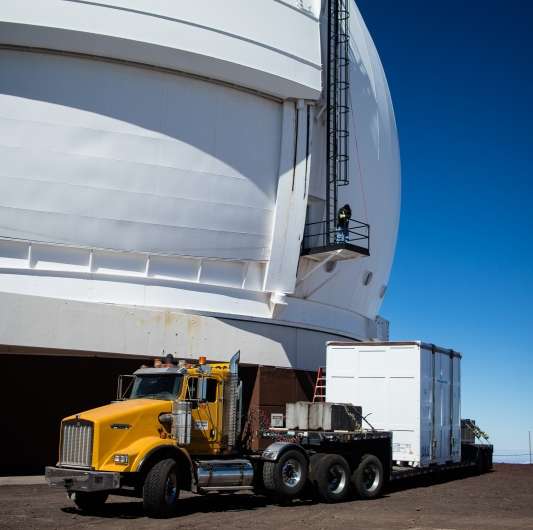W. M. Keck Observatory will peer deep into the intergalactic medium

W. M. Keck Observatory (Keck Observatory) is pushing the cutting edge of scientific discovery with the addition of the world's most sensitive instrument for measuring the tendrils of faint gas in the intergalactic medium known as the cosmic web. The 5-ton instrument, the size of an ice cream truck, is named the Keck Cosmic Web Imager (KCWI). KCWI will uncover vital clues about the life-cycle of galaxies, helping to unravel mysteries about our universe.
Physics professor, Christopher Martin, and his team at Caltech, in collaboration with Keck Observatory, University of California Santa Cruz and industrial partners, designed and built the spectrograph to study the cosmic web in unprecedented detail. KCWI will enable astronomers to study many other exceedingly faint objects in the universe as well.
"For decades, astronomers have demonstrated that galaxies evolve. Now, we're trying to figure out how and why," says Martin, describing the potential of this instrument. "We know the gas around galaxies is ultimately fueling them, but it is so faint - we still haven't been able to get a close look at it and understand how this process works."
The design of KCWI is based on its predecessor, the Palomar Cosmic Web Imager. KCWI will be installed on one of the twin 10-meter Keck Observatory telescopes, the largest optical/infrared telescopes in the world. The telescopes' location on Maunakea provides the most pristine viewing conditions in the world for this science. This unbeatable combination of technology and location will enable KCWI to provide some of the most-detailed glimpses of the universe ever, including the study of gas jets around young stars, the winds of dead stars and even supermassive black holes.
"The best location in the world for astronomy calls for the best tools for astronomy," said Hilton Lewis, director of the Keck Observatory. "With KCWI on the world's largest telescope, we are well positioned to develop our understanding of the evolution of galaxies by capturing high-resolution spectra of some of the faintest, most difficult to study objects in the universe in ways never before possible."
KCWI arrived by ship from Los Angeles on January 20 and was carefully transported up to the observatory atop Maunakea. The instrument will be installed and tested, followed by the first observations in the coming months.
Provided by W. M. Keck Observatory



















